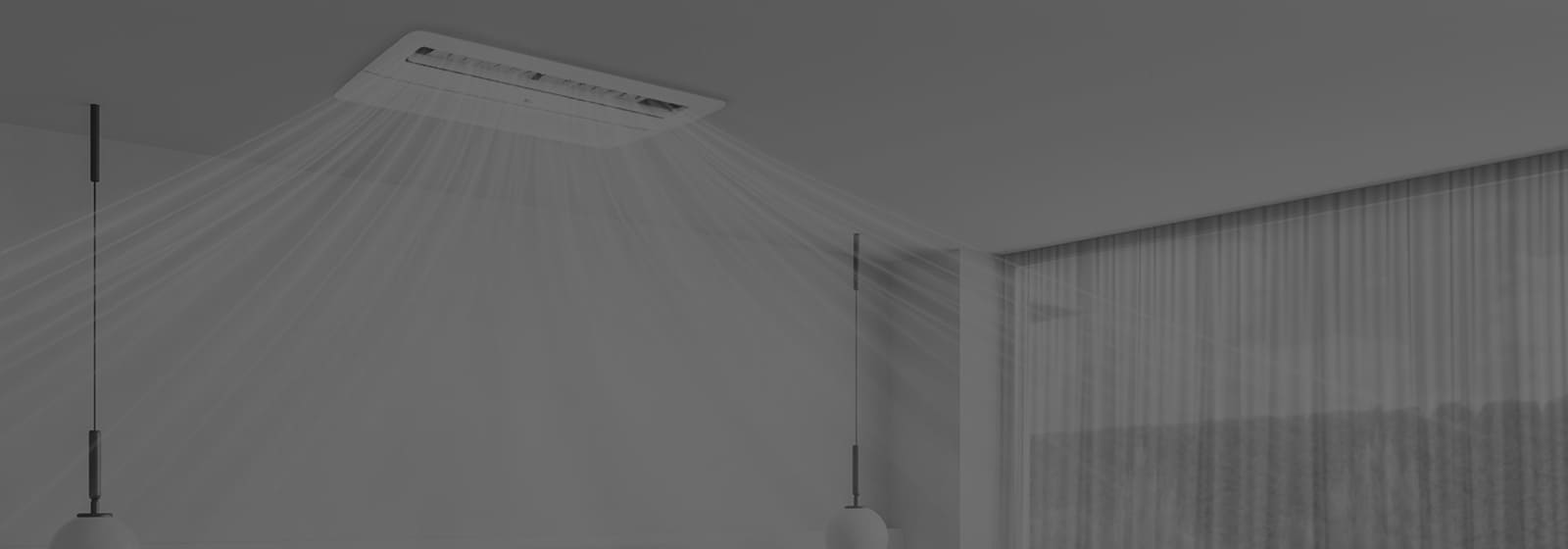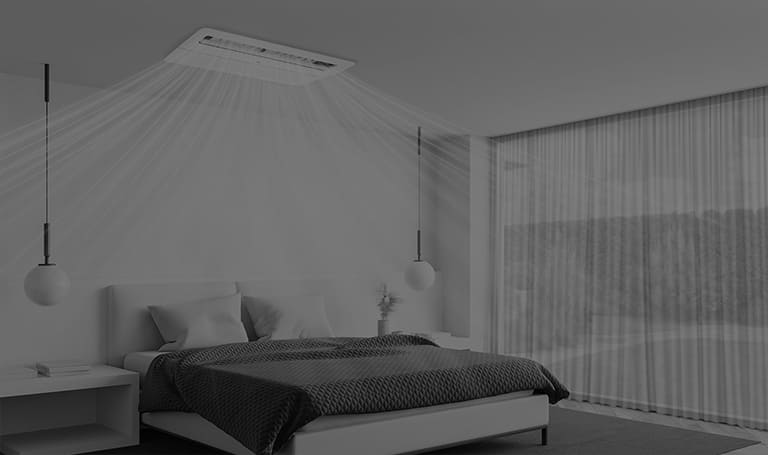-
Meet IAQ Specialist, Dr. Hyung Ho Park
-
Q. Please introduce yourself
Hello. I’m Hyungho Park from the LG Air Solution R&D Lab. Since the onset of the COVID-19 pandemic, customers have become more interested in indoor air quality. I’d like to introduce you to some of our products and technology for creating safer indoor air environments.


-
Q. What are you working on now? Also, can you please tell us about your experience in the HVAC industry?
I received a Ph.D. related to fine dust and air quality and have been working at LG Electronics ever since, focusing primarily on the research of air purification technology along with the development of core components and product application technology such as air filters.
In particular, I was working on the establishment of the industry’s first Air Science Lab. In 2018 as we strengthened our capabilities in R&D related to the transmission of indoor air pollutants.
Outside of our own R&D, I also serve as a board member of the Korean Society for Indoor Environment and the Korean Association for Particle and Aerosol Research and I also attended the Air Purifier Standard Enactment at IEC in order to further progress the standard of our products to meet our customers’ needs.
-
Q. When did the basic concept of IAQ come about and when did the importance of IAQ begin to be recognized? Before the concept of IAQ emerged, what were the main trends in the HVAC industry?
IAQ was initially only recognized as a small part of the general air quality issue. But it gradually became an independent issue and is currently growing as a significant factor in protecting overall health. Guidelines for air quality in Europe were first published at the WHO European office in 1987, and these guidelines addressed radon, tobacco smoke, and indoor air pollutants. Since then, the WHO has operated a task force for designating separate IAQ guidelines. In 2009 and 2010, designated dampness and mold as indoor pollutants and significant contributing factors to poor IAQ.


-
The atmospheric fine dust forecast began in Korea in 2015, and since that time, attention given to indoor air quality has continued to rise dramatically. Concerns have also grown over sick building syndrome in new facilities such as apartment buildings and schools and new automobiles and other forms of transportation. In addition, attention given to living spaces of those susceptible to diseases related to the environment has greatly increased, and the significance of IAQ for welfare facilities to improve overall well-being is slowly gaining more attention.
Indoor space is created artificially by isolating it from the outdoor environment for more comfortable living conditions. Some of the main attributes of this type of indoor space are heating and cooling, noise, lighting, and air quality. But since people are most sensitive to hot or cold environments, we’ve long been conducting systematic research on thermal comfort in indoor spaces to develop various indices. The HVAC industry implements the results of this research into the design and operation of HVAC systems in buildings. On the one hand, noise and lighting are easier for people to detect, and thus, there are laws and regulations about these factors in indoor spaces.
On the other hand, sensitivity to air quality is greatly different from person to person, resulting in a lack of social recognition of the importance of air quality and insufficient technological development and management directed at this issue.
-
Q. The onset of the COVID-19 pandemic has changed people’s perception of IAQ and had a significant impact on the HVAC industry. What are some IAQ trends that are quickly changing since the pandemic?
Since the onset of the pandemic, interest in healthier air and personal hygiene has increased when it comes to the products used in crowded spaces. In particular, as people limiting their outdoor activities and spending more time indoors, much more attention is being given to effectively preventing the spread of infections viruses through indoor air quality management. According to WHO guidelines, COVID-19 is most commonly spread through droplet infection. However, WHO guidelines also state that COVID-19 droplet nuclei can be carried in the air and spread to others or into other spaces through aerial infection. Acknowledging these guidelines, the HVAC industry is also making efforts to protect the health of building occupants by proactively implementing HVAC operation methods and technologies that can mitigate the risk of infection.
When it comes to reducing the risk of infection, solutions like Dedicated Outdoor Air Systems (DOAS) are creating major changes in the HVAC system. The HVAC systems are providing a higher ventilation rate than before to lower the concentration of pollutants in the air. Furthermore, air purifiers with HEPA filters are being implemented for spaces where ventilation is insufficient. The need for regular filter management by specialists to ensure the safe operation of filtration products is also growing as efforts in the product maintenance field are improving. Also, each country is readdressing legislation to advance HVAC systems, which is creating new business opportunities in the hygienic HVAC space.


-
Q. There are many ways to improve IAQ with an HVAC system, including ventilation, filtering, hygiene technology and temperature and humidity control. Which of these is the most important?
It’s more than just one that is important. It’s best to implement a range of core technologies to improve IAQ. Ventilation is necessary to remove indoor pollutants such as CO2, particulate, and gases while supplying fresh air from outdoors. But energy loss can occur through this process, so it is important to configure the ventilation volume properly. In spaces where ventilation is difficult, it is essential to circulate air through high-performance air filters in air purifiers or HVAC purification systems to remove pollutants from the air quickly.
It’s also crucial to prevent viruses and bacteria that are collected in the filter from proliferating with hygiene technology. Because the temperature and humidity influence the HVAC energy consumption, comfort, and proliferation of microorganisms, it is also important to discover the proper conditions for each environment and manage temperature and humidity accordingly.
-
Q. Since the pandemic, it seems like LG Electronics IAQ solutions have also changed quite a bit. In what ways have these products changed?
Like most HVAC companies, we’ve also been focusing on indoor air quality management for dealing with the issue of removing fine dust from indoor air. However, since the start of the pandemic, we’ve increased the amount of attention we give to the health and hygiene of building occupants while our focus has shifted to technology that manages indoor air pollutants, including harmful gases, and we’ve strengthened measures to deal with infectious viruses and bacteria.
In order to get rid of airborne viruses from the air, we have advanced the development of HEPA filters, high-rated MERV filters and high-efficiency electrostatic filters and actively implemented them in our solutions such as DOAS, AHU, ventilation devices, indoor HVAC units and air purifiers.
Since HEPA filters are effective at removing at least 99.97% of airborne viruses*, they are an important factor in removing viruses from the air. These filters have been certified to remove ultra-fine dust of PM1.0 and PM2.5 and are already being widely implemented in schools, houses and multi-use facilities. Because influenza virus particles are approximately 60-200nm and typically spread in droplets a few microns in size, they are effectively filtered with air purifiers and these purifiers are already being certified by several certification organizations**. ASHRAE (April, 2020) and REHVA (March, 2020) also advised that air purifiers with HEPA filters helped to reduce the concentration of infectious aerosols in the air.
*The fine dust reduction performance of the air filter was tested by IBR by disposing Thermally Generated PAO Oil Aerosol, 0.3µm mass mean diameter, and the result was 99.97% reduction of fine dust. (the test was based on the IEST RP CC001.6 (2016) HEPA and ULPA Filters). The results may vary depending on the environment.
**The airborne virus removal performance was tested by Hongkong university of science and technology by spraying E.coli and Bacteriophage in a chamber of 9.84ft*8.2ft*8.2ft (W*D*H) and kept the appliance (Model number PS-P809CB, PS-V219CS, PS-V219CG) running for twenty (20) minutes, and the result was 99% reduction. The results may vary depending on the environment.


-
Like HEPA filters, MERV filters are also made of melt-blown felt and filters with a MERV 13 rating or higher are recommended to increases the virus filtering effect.
Electrostatic filters are effective at eliminating fine dust and have a very low-pressure loss so they are capable of removing viruses from the air without weakening the airflow volume of HVAC systems. But since plasma discharge can create harmful ground-level ozone, brush-type ion technology that does not create ozone is being implemented.
In order to prevent secondary contamination from viruses that collect in the filter, virus-resistant filters, high-voltage hygiene technology and UVC light emitting technology is being applied to air purifiers and various HVAC products.
Virus-resistant filters, including hygienic materials used in HEPA filters, reduce the risk of infection by destroying the viruses with an oxidization effect or ion exchange.


-
We use UVC light to directly damage the DNA of viruses and are implementing technology that prevents the proliferation of viruses. We’ve also improved efficacy to 99.99%.* Our UVC-LED technology is safer as it uses no mercury than existing UV lamps is very favorable for product application with its smaller size and longer lifespan (~50,000 hours).
* Uvnano™ is a compound word derived from the words UV and its unit nanometer.
** Based on TÜV Rheinland test conducted according to LG test method in compliance with ISO 20743 : 2007 removing 99.99 of percent of Staphylococcus aureus, Staphylococcus epidermidis, and Klebsiella pneumoniae from the air conditioner blower fan after being exposed to UV LED lights for 4 hours (tested models : PBM13M1UA, PBM13M2UA, PBM13M3UA). The result value is measured at a specific point set in the experiment.
*** This result may differ in actual use conditions of the air conditioning system.
-
Q. It seems like there might be a tradeoff between building energy efficiency and IAQ management. What’s the connection between building energy efficiency and IAQ?
As you know, HVAC systems are meant to create comfortable and healthy indoor environments. Just as an HVAC system supplies energy for heating and cooling, an HVAC system also has the basic role of supplying energy for the management of IAQ. From an energy efficiency perspective, just as high-efficiency heating and cooling technology reduces energy consumption, effective management of indoor air quality can also reduce overall building energy efficiency.


-
Indoor air quality was conventionally handled through ventilation, and the entire building would operate under the regulated ventilation volume. Through this method, a considerable amount of energy is consumed in the ventilation process. However, areas where pollutants occur and don't occur coexist within a building. Understanding this phenomenon and only operating the ventilation process where it is needed can reduce energy loss.
Recently, it was found that energy consumption could be reduced. in buildings with IoT air quality sensors. Furthermore, the introduction of high-efficiency heat exchange technology and air purification technology might also reduce building energy consumption even more.
-
Q. Do you see investment to continue in IAQ if the pandemic comes to an end?
According to future building regulations, new buildings are expected to be designed for minimum energy consumption with concepts like passive houses and zero energy buildings. Buildings will have better insulation and less dampness to alleviate the risk from outdoor pollutant sources, but IAQ will inevitably suffer from indoor activities such as cooking. To manage indoor pollutants, high-efficiency ventilation technology with minimal energy loss along with air purification and hygiene technology that can quickly remove fine dust, harmful gases, and viruses from the air are necessary. Also, the advancement of real-time pollution measuring technology will be required. R&D investment in these areas is expected to increase.
-
Q. Going forward, in what areas is LG Electronics researching for IAQ solutions?
We’re advancing energy-conscious technology for healthier and safer indoor environments.
Typical central HVAC systems increase the risk of cross-contamination due to return air mixing. OA+RA HVAC systems can also increase the risk of infection as infection source air and pollutants are recirculated through AHUs and ducts.
To improve these shortcomings, dedicated outdoor air systems should be introduced. A DOAS system does not spread infected or polluted air through ducts into different building areas. However, DOAS has the risk of consuming excessive energy for heating and cooling. We must aim to save energy with an integrated HVAC system.


-
Integrated system configurations such as individual ventilation + DOAS, individual ventilation + VRF or FCU, or DOAS + VRF or FCU help reduce infection spread and energy consumption.
Of the many pollutants that occur in a residential environment, some of the most prevalent are oil mist, harmful gases, and odors that result from activities such as cooking. These pollutants occur in large amounts and are harmful to our health. Still, it can be difficult to effectively manage these pollutants due to the rapid decline of the filter lifespan. To resolve this issue, we’re putting efforts into filters with new materials that can handle larger volumes and maintain filtering performance in any environment, as well as airflow solutions that mitigate the spread of pollution.
While we still have a way to go, we are also preparing technology to help manage ventilation loads in line with the passive house and zero energy building trends and advanced energy-conscious air quality control technology that removes CO2 and generates oxygen.
-
Q.Thanks to those who are doing this research for the future, hopefully, do you think we can enjoy our daily lives soon?
Many specialists think this will be possible and I truly hope this is true. If we can apply various technologies and solutions that I mentioned earlier in this interview, with minimal effort spent on personal hygiene, we will soon be able to enjoy events and leisure with many people and get back our daily lives.
Please click the 'INQUIRY TO BUY' banner below to contact your local LG office for further information on solutions and products.












